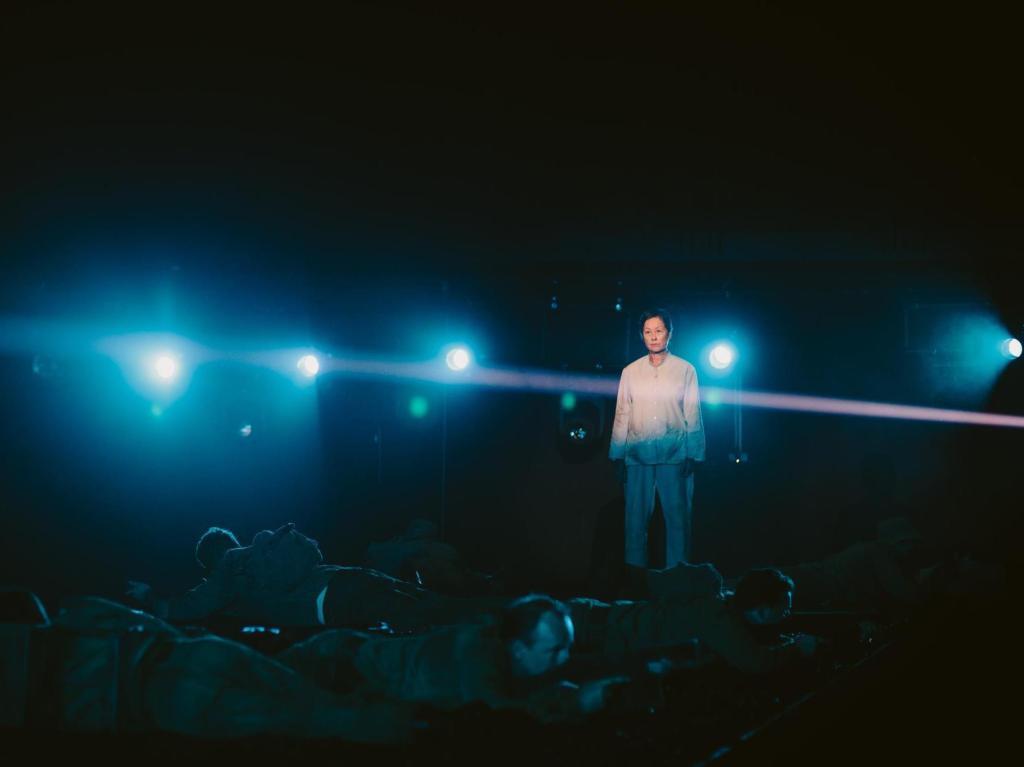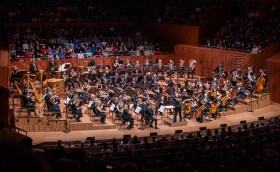Mémé Thorne on stage for Long Tan.
Photograph by Kate Pardey.
The Battle of Long Tan, the intense Vietnam War conflict between Australasian and North Vietnamese fighters, is the subject of a new play by playwright Verity Laughton for Brink Productions. In the famous battle, 100 Australians and three New Zealanders held off 2000 Viet Cong and North Vietnamese fighters, suffering just 17 casualties to the enemy’s 245. While the legendary battle was a success, the same can not be said for the play that it inspired.
Before the play, the audience is instructed on how to wear the compulsory headphones that they are told is needed to fully experience the performance. This is because, despite performing in a small theatre where voice projection is not an issue, the actors are wearing microphones which are ‘switched on and off’ from the sound booth as required. Because you can hear the actors and the sound effects adequately without the headphones, and the fact that amplification was often belatedly switched on half-way through an actor’s line, the headphones and microphones are an unnecessary and uncomfortable gimmick.
The use of headphones that prevent the audience from hearing the actor’s natural, un-mic’d voice creates an unnecessary disconnect between audience and performer and undermines an actor’s efforts to credibly portray a character. This disconnect is exacerbated by a total lack of set design, and the poor choice of layout (from the various stage configurations available at the versatile Space Theatre). The real-life battle was fought in a rubber plantation amongst the verdant tropical landscape of southern Vietnam. In the play it is fought on a narrow ‘runway’ stage covered in black rubber crumb that separates two banked rows of the audience facing each other. The total absence of any set design to establish location or mood is exacerbated by the sight of the audience on the other side of the stage, with the result that suspension of disbelief is impossible. The director’s attempt to use lighting, sound and headphones, to compensate for these failures is not successful, and in the case of the headphones, counter-productive.
The other major drawback of this play is Verity Laughton’s clunky text. Other than the battle scenes that follow a natural chronology, there seems to be no reason why any of the other scenes are included where they are included, or, considering their paltry contribution to any plot. why they are included at all. These include some scenes featuring cliched Vietnamese characters giving the audience a history and geography lesson, and some scenes set after the war. The play contains too much military jargon, devotes too much time to the actual battle (there is only so much yelling and lighting effects that can be used before it gets dull) and too-few scenes featuring much-needed personal, character-defining, non-military dialogue between soldiers. Regrettably, much of the play is simply akin to a poorly-scripted and cheaply-made History Channel television documentary and the rest didactic waffle.
Despite several cast members forgetting or fluffing their lines, including one doing so on more than one occasion, the acting is generally good, considering the limits the text and the production places on them; Nic Grieg, Chris Pitman, Patrick Graham and Antoine Jelk were standouts.
The Vietnam War is an important part of Australian military and social history and one of its most iconic battles, the Battle of Long Tan, deserves a better tribute than this hollow, clunky, production.
Rating: 2 stars out of 5
Long Tan
Playwright: Verity Laughton
Director: Chris Drummond
Cast: David Andrij, Stuart Fong, Patrick Graham, Matthew Gregan, Antoine Jelk, Patrick Klavins, Nic Grieg, Guy O’Grady, Chris Pitman, Mémé Thorne, Elijah Valadian- Wilson and Taylor Wiese.
Designer: Wendy Todd
Composer and Sound Designer: Luke Smiles
Lighting: Chris Petridis
Brink Productions in association with State Theatre Company an Adelaide Festival Centre
Space Theatre, Adelaide Festival Centre
31 March – 8 April





